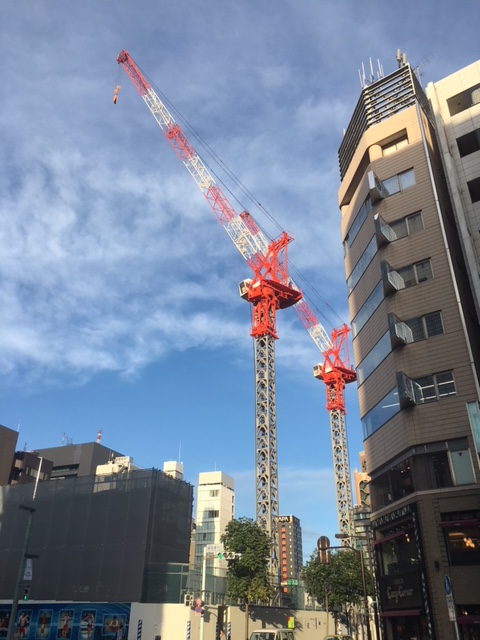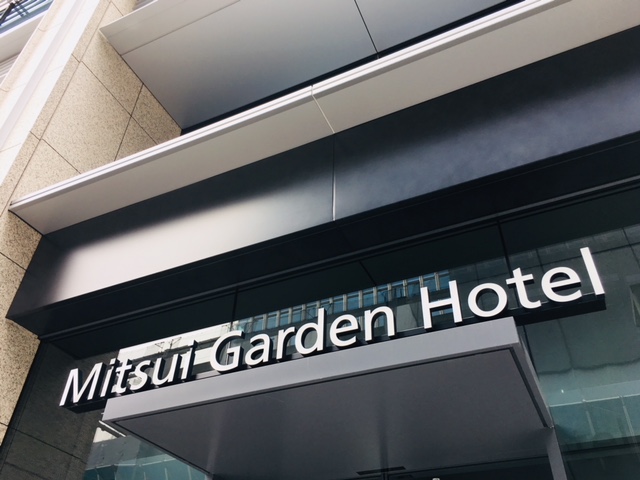What goes up, up, up? Taxes, no doubt, but in Tokyo, right now, “buildings” is the answer. More specifically: hotels. In a frenzy of construction that seems aggressive even for Japan, old buildings are falling like dominoes and new ones are springing up like weeds. It’s not a stretch to say that there’s a major construction project on every corner in Ginza and most corners in the Nihonbashi-Marunouchi area right now.
With tourism skyrocketing and the 2020 Olympics right around the corner, the race to add beds and baths to the metropolis is heating up. Most residents will agree that the streets of central Tokyo are crawling with tourists and the figures back it up.
Inbound tourists reached 2.7 million in May, which is an increase of 16.6% compared to the previous year and April 2018 was the best month ever for overseas visitors. Those people have to stay somewhere. With tourist numbers increasing by leaps and bounds every year since 2011, and the Olympics on the horizon, there appears to be no ceiling on how many rooms the market can bear.
Make room for MUJI rooms
Ready to answer the call, is the minimalist retailer MUJI (Ryohin Keikaku Co., Ltd.). MUJI is well known in Japan for its “no brand” line of products that includes stationery, clothing, appliances, home furnishing and dry goods and most recently cafes, but not hotels.
MUJI is also popular in China and that’s where it opened two hotels this year. In January, a 79-room facility opened in Shenzhen, featuring a MUJI store and diner. It was followed by a Beijing property of 42-rooms combined with a café, diner, book lounge and business centre, opening on June 30.
What about Japan? Covered. The “Maroniere x Namiki Yomiuri Ginza Project,” scheduled to open in the spring of 2019, will feature 10-floors, including 3 basement levels, housing a new MUJI world flagship store, with 3,000 feet of retail space and a hotel spanning the top 3 floors. Of course, all the furniture and amenities in the rooms will be MUJI products.
You have to hand it to the MUJI business strategists for opening the brand’s first hotels in China and enticing tourists and brand loyalists to follow them to Japan. Chinese tourists were the largest group of foreigners visiting Japan in 2017 at 25.6%, slightly edging out Korea’s 24.9%
A blogger recently posted photos of Chinese, who were apparently not guests, taking selfies in front of the Shenzhen MUJI Hotel. According to the hotel website, the "no-brand” brand has “arranged a reasonable price space in which you will sleep well, restoring both mind and body, as well as services that naturally connect you to the locale.” Sign me up.
Bigger, better and more
Another brand answering the call for rooms is the Mitsui Garden chain, which is planning to open the Mitsui Garden Hotel Nihonbashi Premier (its 9th Tokyo hotel and 23rd in Japan) brazenly on a corner just down the street from the Mandarin Oriental.
Scheduled for a September opening, the Nihonbashi Premier will feature 264 rooms, a large Japanese style “public bath,” an open terrace café, several restaurants and a “table tennis salon diner.” Ping-pong diplomacy? Perhaps, but aiming for more well-heeled tourists, the rack rate for a room is ¥20,800 a night.
Not to be outdone is Japan’s ubiquitous APA brand, which as of July has 385 hotels in Japan and is known to be popular with both business and budget travelers from China, Korea and Taiwan. APA plans to open 5 new hotels in 2018, with 13 more openings slated for 2019 and 2020. Phew. That’s a lot of concrete and linen.
Will there be a vacancy glut? Only time will tell, but to be on the safe side, best to book your 2020 rooms well in advance.



